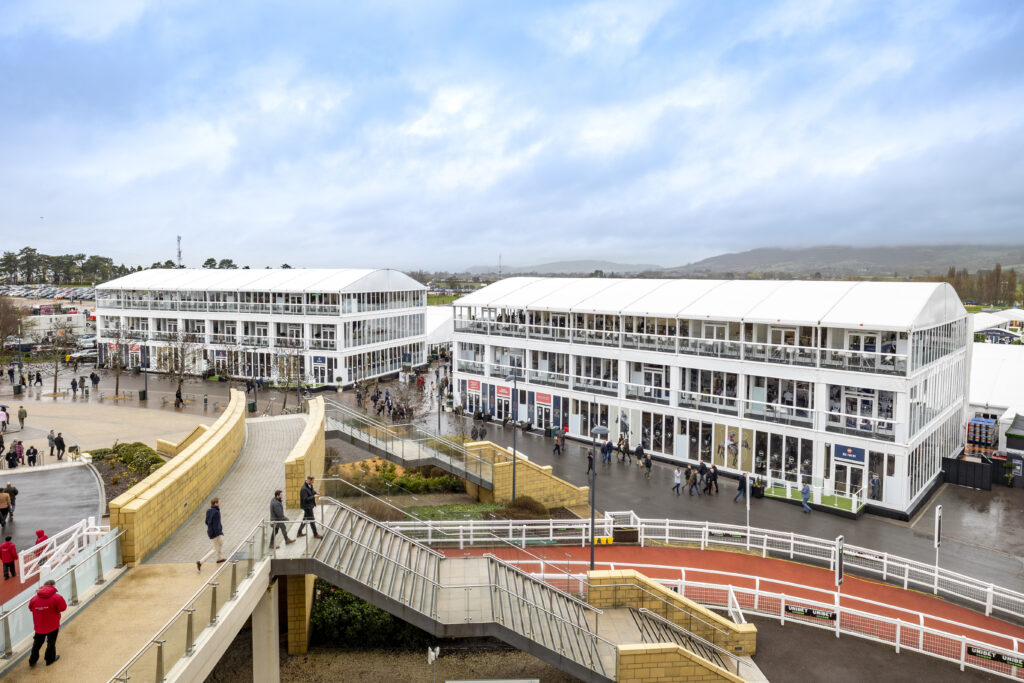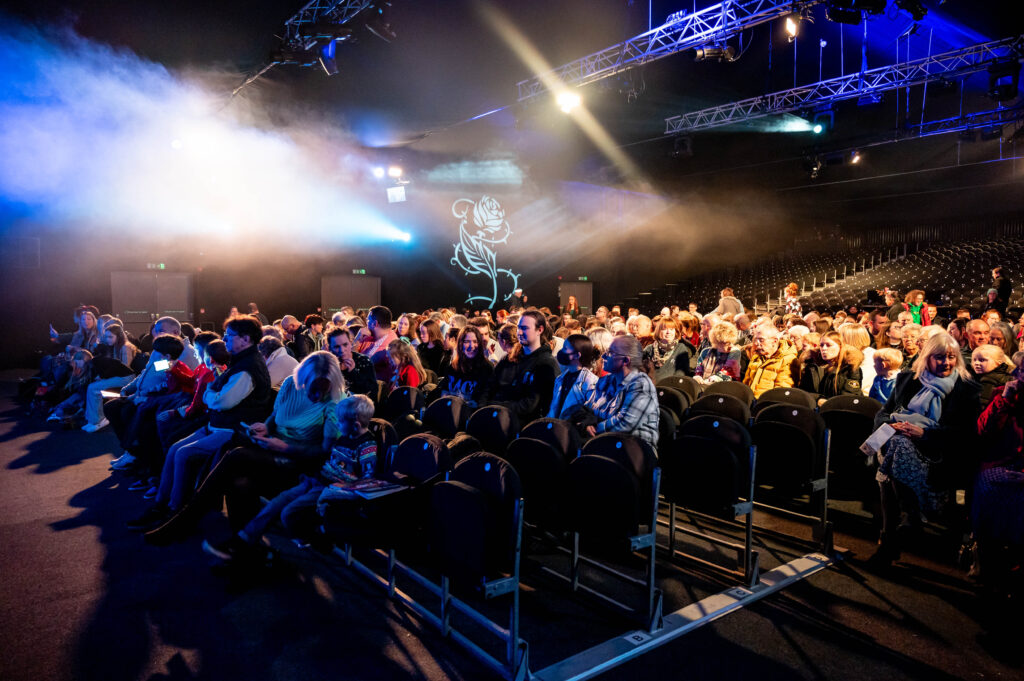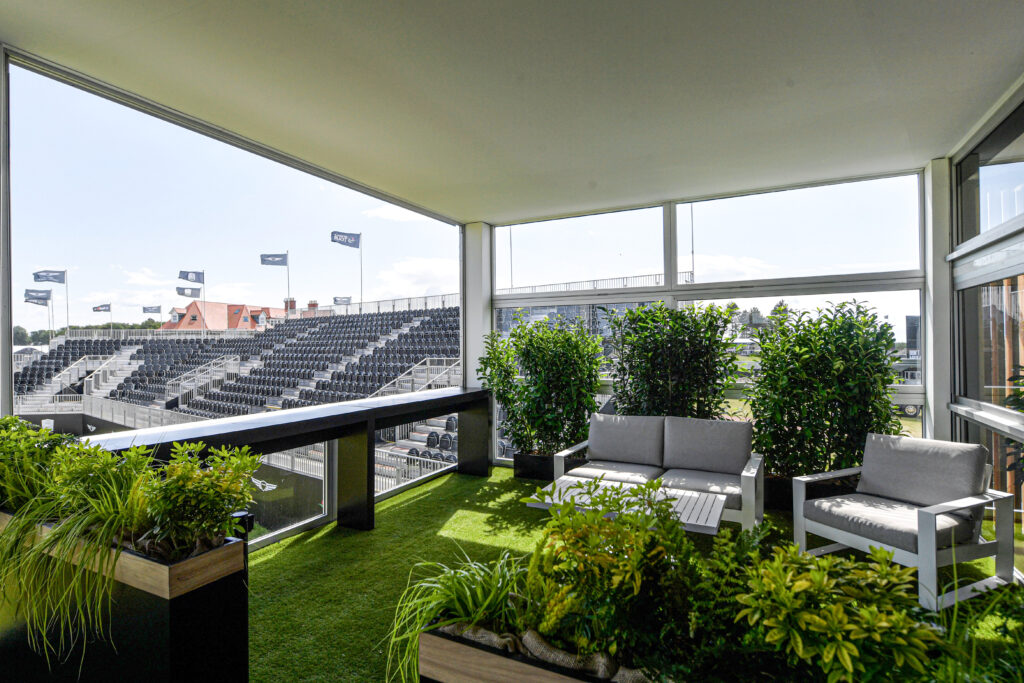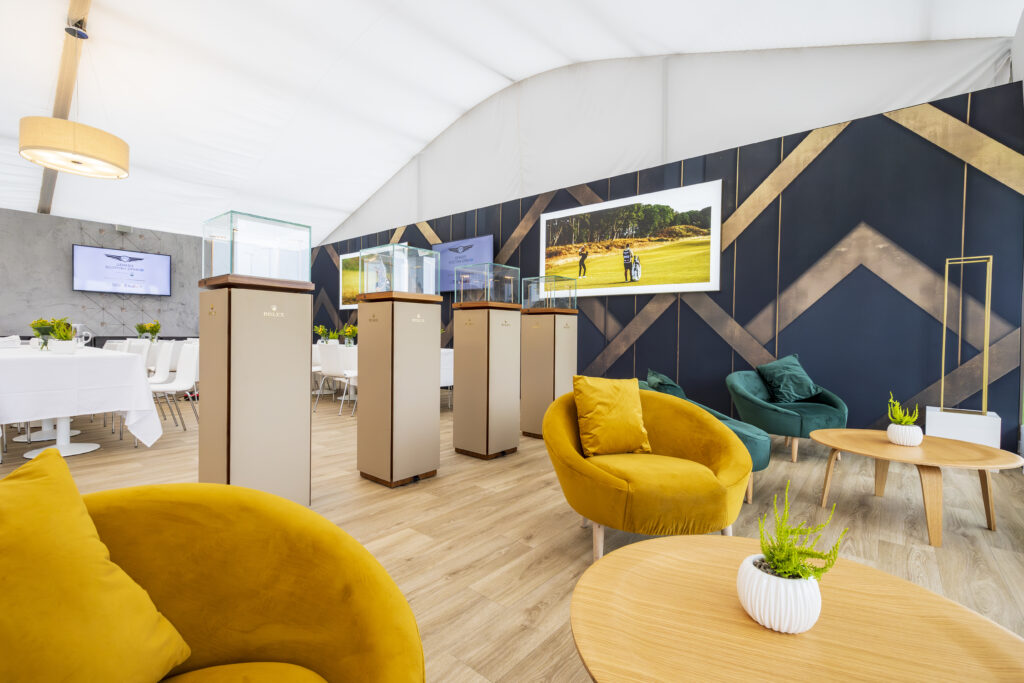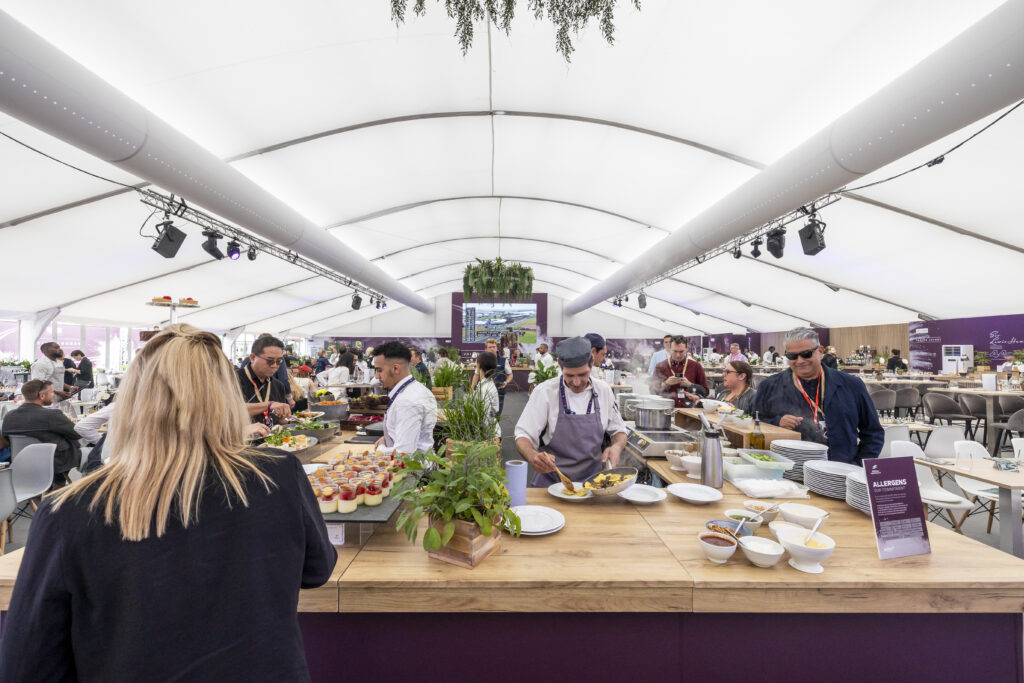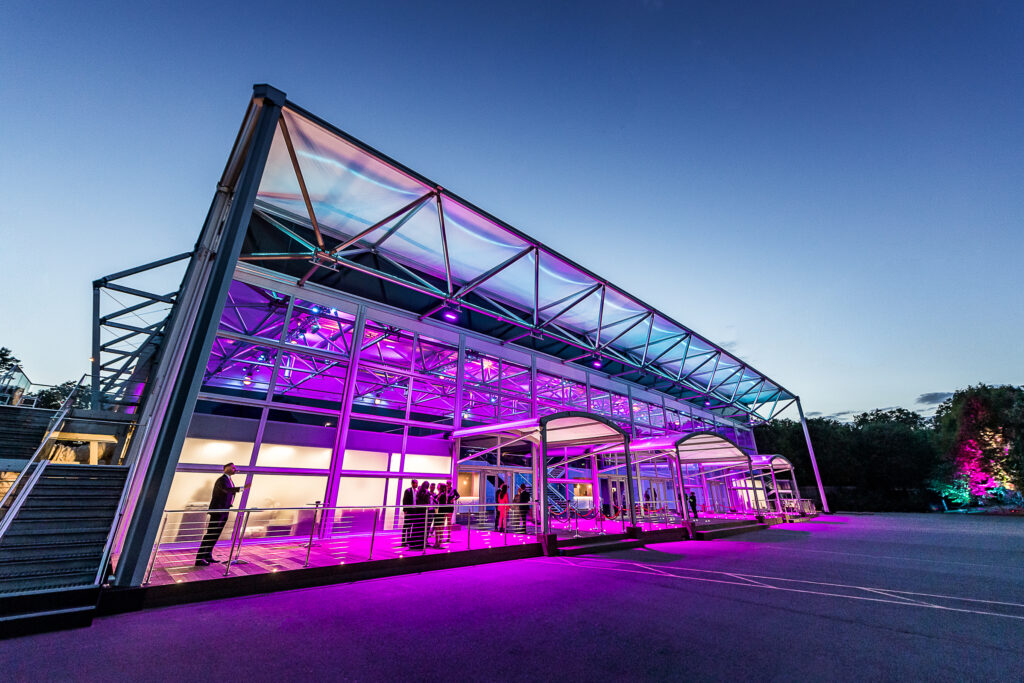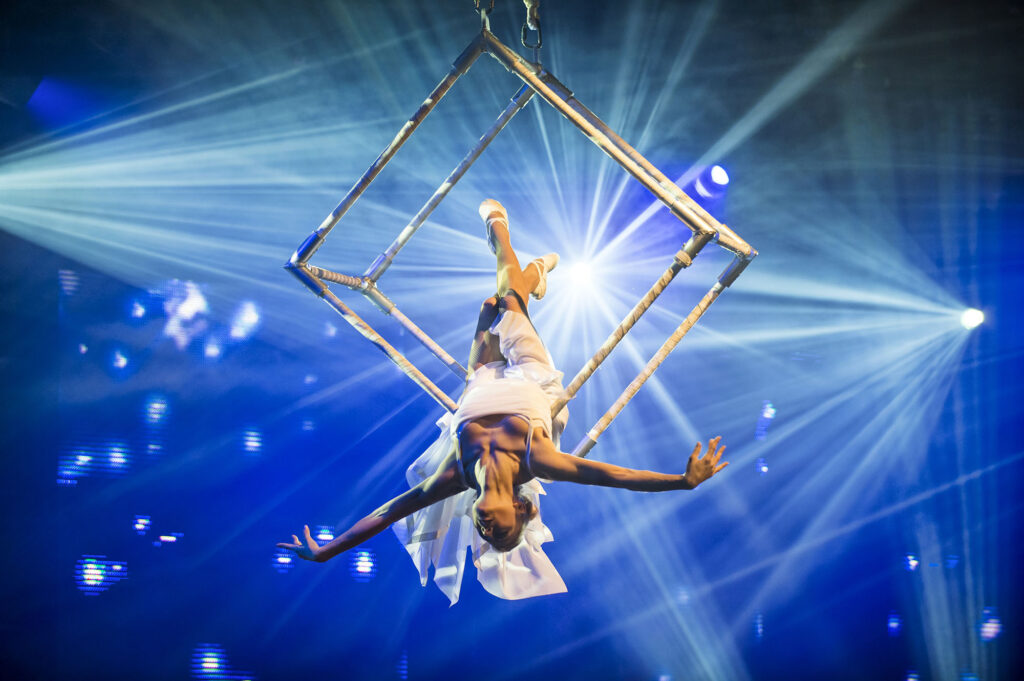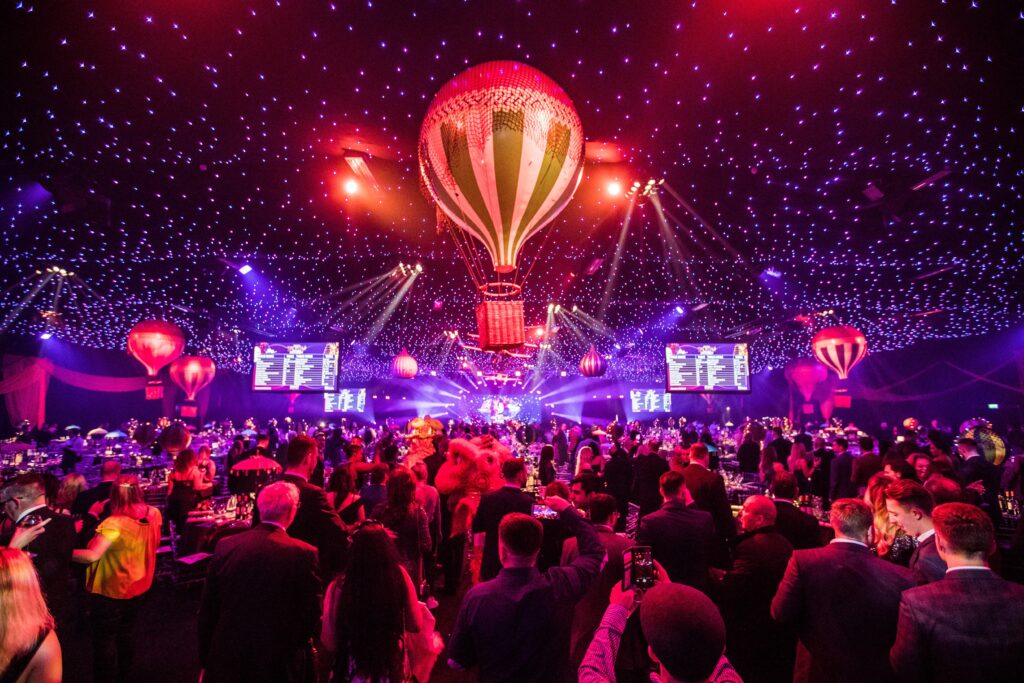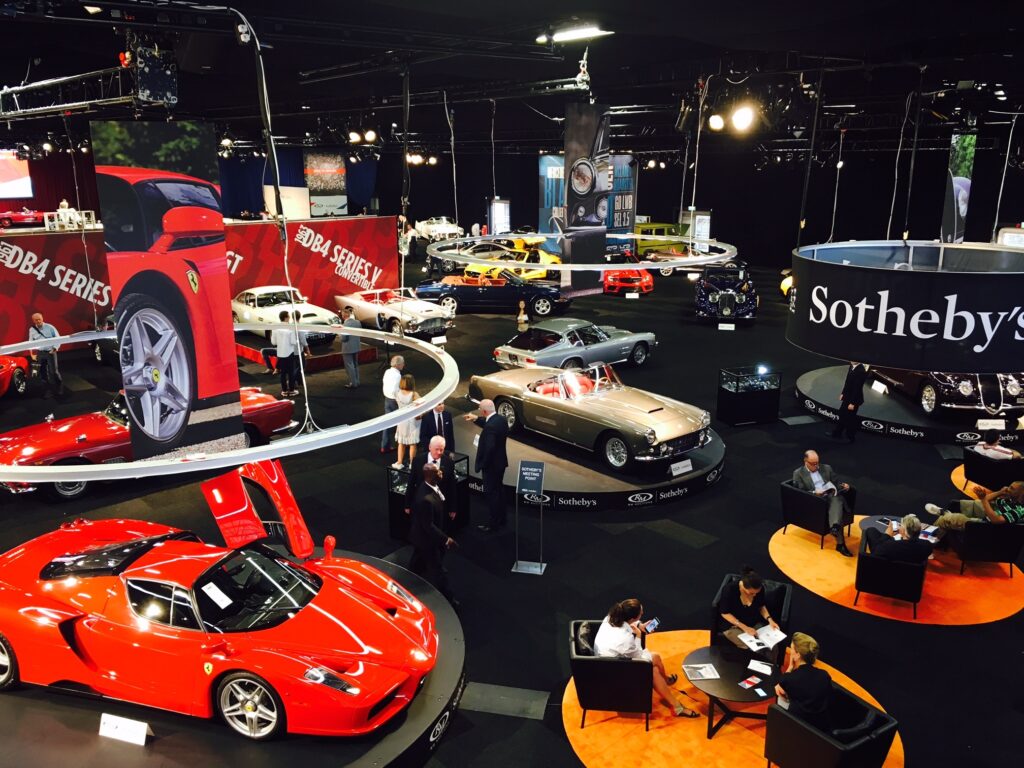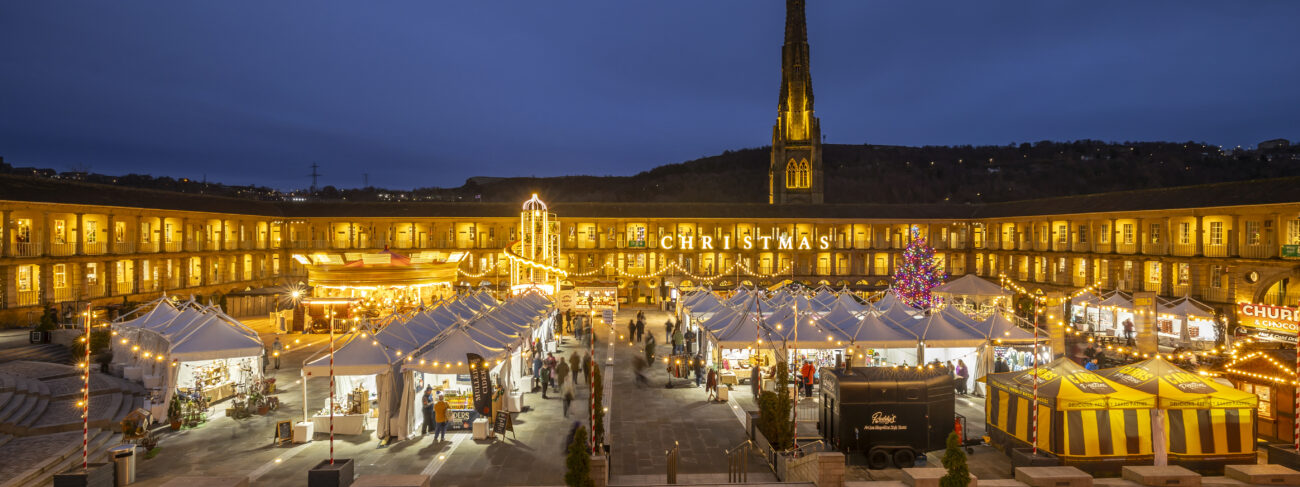
When you're planning an event, choosing the perfect venue is always a pivotal decision - and temporary event structures open up a vast range of possibilities.
From modern multi-level event structures, to traditional marquees, temporary venues can be completely customised, giving you the freedom to create the setting - and guest experience - you want, in almost any location. But where do you start?
Our GL events team works on world-class events of all sizes, from the British Grand Prix at Silverstone to the Hay Festival, and from temporary theatres and graduations to outdoor exhibitions, product launches and corporate events. So, in this guide, we’ll walk you through your options and help you plan a successful event. Let's get started...
What exactly are temporary event structures?
Temporary structures for events come in a huge range of shapes, sizes and specifications, from simple pagodas for exhibitions and retail, to giant three-storey event structures, fully branded and fitted out for maximum impact.
What all of these event structures have in common is that they’re portable and temporary, so they can be used to turn a field, forest or car park into an impactful venue. And crucially, they can be taken away afterwards.
So, can temporary structures be used for both indoor and outdoor events? Absolutely. You might hear people talk about ‘event overlay’, and that means bringing temporary elements to an existing indoor or outdoor event space. It could be an exhibition hall that just needs bespoke AV and branding, or a green-field site that regularly hosts events but needs all the infrastructure bringing in – from temporary event structures to power and trackway.
What kind of events are temporary structures suitable for?
The biggest advantage of temporary event structures is the flexibility they bring, and that makes them suitable for a diverse mix of events, including:
Sporting events
Bring in hospitality suites, grandstand seating, tracks, pitches and changing rooms for all kinds of sporting events, from cycling, motor racing and athletics to golf and cricket.
Festivals & shows
Provide event structures, stages, seating, bars, food courts and backstage areas for everything from literary festivals and garden parties to car shows and military tattoos.
TV, film, theatre & concerts
Create performance space for plays, immersive events, TV shows, and film shoots with temporary event structures, stages, seating, bars, backstage areas and TV towers.
Corporate events & product launches
Bring teams, peers and clients together for corporate events and product launches, with branded temporary venues, seating, stages, hospitality and the latest AV tech.
Planning a different kind of event?
Explore our full range of solutions across all events.
Where can temporary event structures be put up?
Temporary structures open up a huge range of locations, so you can take a more imaginative approach to your event. You might like to use the grounds of your own property (or your client’s) or there might be a piece of private or public land you’d love to use. So what do you need to consider?
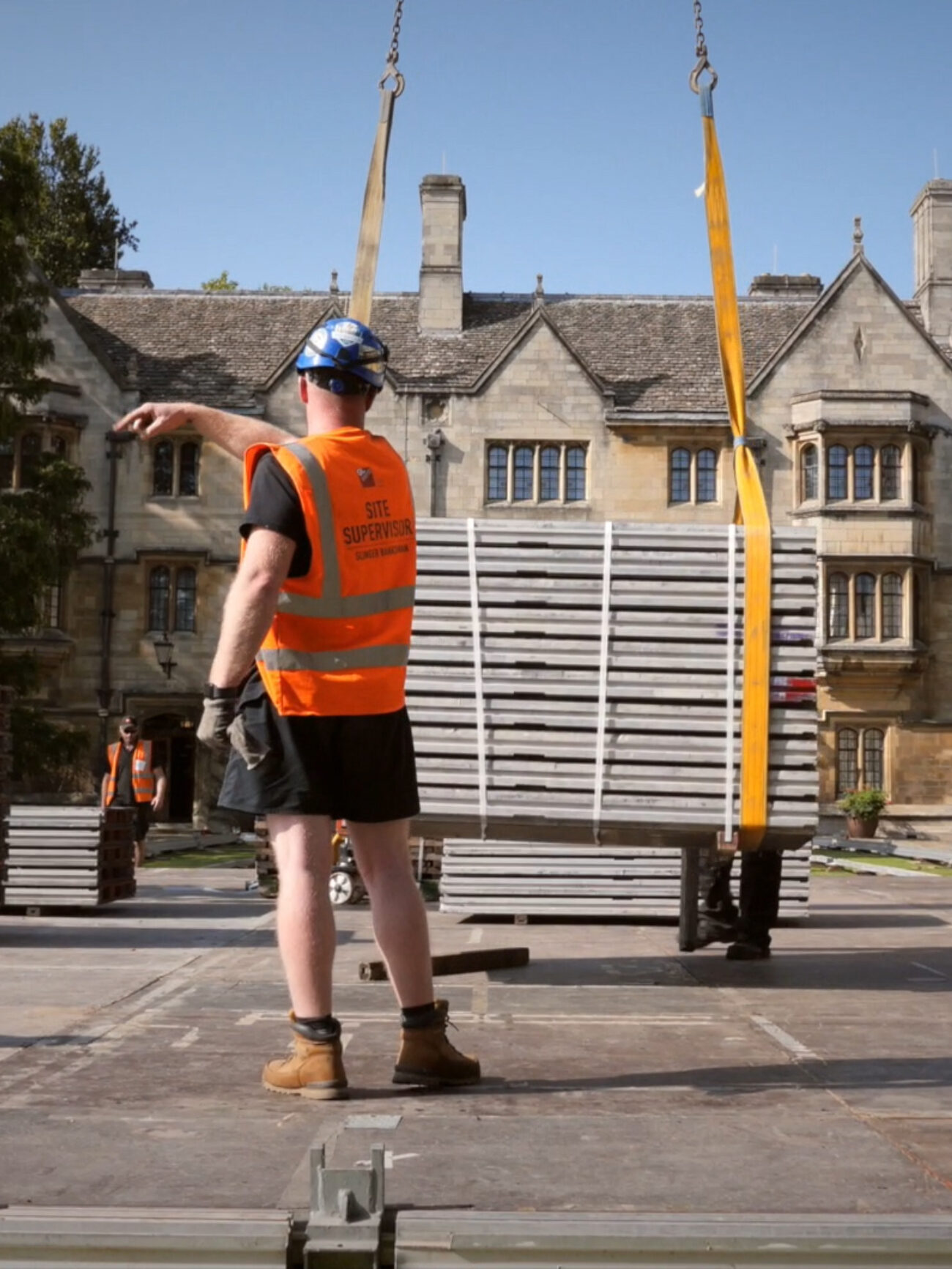
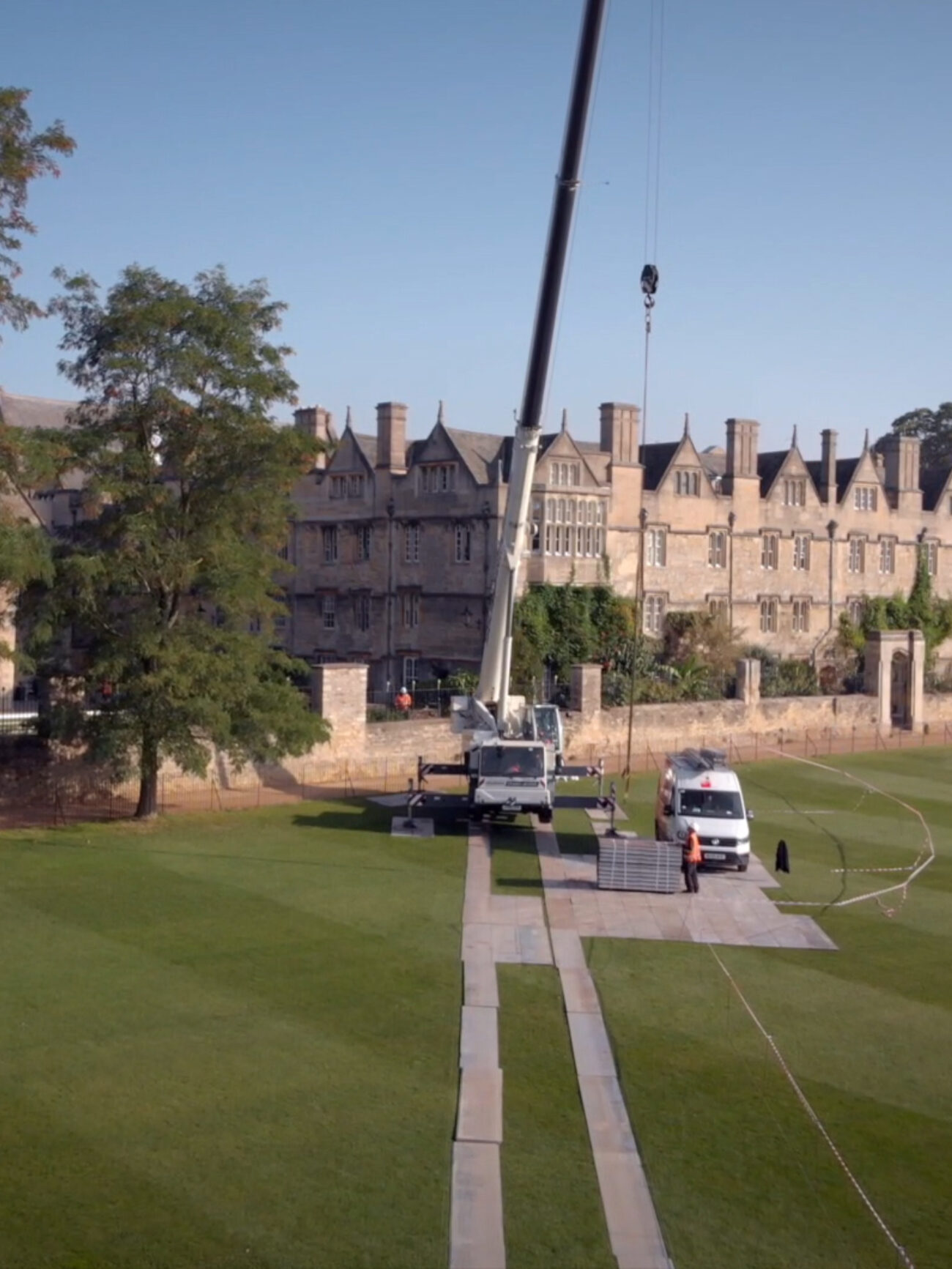
Accessibility
Your location needs to be accessible to your guests, so they can get there and back easily and safely. It’s also a good idea to talk to your local fire officer to make sure it’s accessible for emergency vehicles.
Your site also needs to be accessible to suppliers and their lorries. You’ll need access at least as wide as a farm gate, and you might need traffic management or trackway to protect the ground. It’s a good idea to check restrictions on access at certain times of day.
A proactive supplier will be able to overcome a lot of access challenges, but the more complex they are, the more they’ll stretch your budget.
Permission
If you want to put temporary event structures on public land, or land owned by someone else, you’ll need permission – not just for the event, but for the time it takes to put up and take down the structures too.
It’s advisable to get a tenancy agreement from the owner of the land and permission from any residents’ committees or trusts. For a small, private event where you’re not selling alcohol, selling tickets or putting on entertainment, it might be quite simple, but if you’re adding those things in, you’ll need licences from the local council too.
Bear in mind how much disruption your event could have on people and businesses nearby. It might be a beautiful spot, but if you have to negotiate with a lot of neighbours, that puts obstacles in your way.
Do temporary event structures require planning permission?
You won't usually need planning permission....
- If your structure is up for fewer than 28 days
- If the floorspace is less than (xxx)m2
- If it's less than 5m high
- If it's more than 5m from the site boundary
- If it's an extension to an existing building, but is less than 25% of the size, not as high and will be used for a related purpose
- If the space for parking and moving vehicles isn't affected
Planning rules for temporary event structures vary across the UK, so check with your local authority. Do it ahead of time too – if you do need to put in a planning application, it could take 8 to 12 weeks, and if they turn you down, you’ll need time to reconsider.
What kinds of temporary event structures are there?
There’s a huge amount of choice – and you don’t have to settle on just one. A good supplier can put together a whole series of structures to create a space as unique as your event.
So, if you’re wondering – what’s the best type of structure for exhibitions, sports events or festivals? Or what’s the difference between a marquee, a temporary building and a modular structure? Don’t worry, we’ll walk you through it…
You won't usually need planning permission....
- If your structure is up for fewer than 28 days
- If it's less than 5m high
- If it's more than 5m from the site boundary
- If it's an extension to an existing building, but is less than 25% of the size, not as high and will be used for a related purpose
- If the space for parking and moving vehicles isn't affected
Event structures
Single deck structures
Super-versatile structures, available in width spans of 8m to 30m and any length (in multiples of 5m). Choose roof profiles and add bespoke interiors, exteriors and branding.
Multi deck structures
Elegant 2 or 3-level event structures, where you can bring together hospitality suites, restaurants and bars on one footprint, with back-of-house facilities, lifts and full-height windows.
Giant event structures
Giant event structures with exceptional weatherproofing and climate control, in widths of 30, 40 or 50m and unlimited lengths (in multiples of 5m). Choose one huge space or partition internally.
Chalets
At 3x3m to 6x6m, chalets are perfect for individual use, hospitality villages or using alongside larger structures for a completely bespoke set-up.
Marquees & pagodas
From contemporary Clearspan and giant Showspan options to traditional pole marquees and smaller pagodas, marquee structures are a great solution for all kinds of events.
Event overlay
Temporary infrastructure, event structures, power, grandstand seating, branding, lighting and tech that turns blank-canvas venues into sports stadiums, exhibitions, music venues and more.
Seating
Choose comfortable, modern seating that suits your event, from flat-floor options to tiered grandstands with a great view of the action.
What capacity do temporary event structures have?
The capacity of temporary event structures varies hugely, from single chalets and pavilions for as few as 20 people, up to a series of giant event structures capable of holding 25,000 or more.
Working out a structure’s capacity is a careful calculation, based on the kind of event you’re holding. For example, the space each person needs at a tightly packed music festival will be different to an expensive seated dinner.
A good supplier of temporary structures will have a tried-and-tested formula, factoring things like:
- The type of entertainment
- How much people are moving
- Whether there’s catering – and what kind
- What type of seating – theatre, cabaret, dining style, etc
- The kind of furniture used
- The level of service (or the price of the ticket)
- Fire regulations
Plans can evolve, especially when it comes to guest numbers. So look for a supplier who’ll work flexibly with you, tailoring your event structures to your guests, event and budget.
How customisable are temporary event structures?
Temporary event structures give you a blank canvas, so you don’t have to work around the limitations of an existing venue. You can shape the structure’s exterior, as well as its internal layout, so people have the best possible experience – from the walkways that welcome them into the spaces they’ll enjoy inside.
Talk to potential suppliers about their design experience. Here at GL, we’ve worked as Principal Designer on a whole range of major events and our internal design team produces technical and CAD visuals, as well as using 3D modelling to visualise your space.
Can I customise the interior of my event structures?
We’re often asked whether structures can include features like glass fronts, mezzanine floors or branding (they can), as well as what flooring and finishes can be added (lots).
Again, your temporary event structure is a blank canvas, and a good supplier will have a whole range of customisation options to help you achieve your vision.
Custom structures
Branding
From completely wrapping your structure to getting the smallest details spot-on, branding your event makes a huge impact, encouraging guests to share their experience – and their content.
Lighting & audio visuals
Great lighting and AV is all about creating the right atmosphere, using everything from the latest tech, to imaginative light trails and ground features.
Floors, walls & roofs
Choose hard or soft walls, beautiful panelled floors, soft carpets, luxury linings and a range of roof profiles to set the scene.
Doors & windows
Pick doors and windows that create a welcoming, accessible space, making the most of beautiful settings or immersing guests in the experience outside.
Furniture & decor
Choose furniture, fabrics and finishes to suit your event, whether you’re looking for something sleek and corporate, or laid-back and rustic.
Facilities
Build in all the facilities you need - from bars and food prep areas or kitchens, to stages, toilet, first aid, or reception and ticketing areas.
Looking for blank-canvas benefits in a ready to go structure?
The London Evolution structure provides smart, contemporary event space on a fully secured site within the picturesque Grade II listed Battersea Park. This exceptional venue is arguably the most adaptable and flexible event space in London.
Discover Evolution London
Our Evolution London event structure gives you 5,500m2 of unbranded, uncluttered space, in the heart of Battersea, all set up and ready to make your own.
Event FAQs
How to budget for an event using a temporary structure
You might be wondering – are delivery, assembly and dismantling included in the hire cost of a temporary event structure? Well, they should be. A good supplier will take responsibility for putting the structure up and taking it down, including this in their standard pricing.
How to plan a successful event using a temporary event structure
Create a good brief
The more you share with potential suppliers – and the sooner you start – the better they can help. So tell them about your big idea, goals, budget, attendees and technical considerations.
Pick your location
Choose somewhere that adds to your event, whether that’s because it’s impressive, original or just makes guests’ lives easier. Consider accessibility and give potential suppliers a shortlist.
Choose a supplier
Explore their experience, capabilities and client testimonials, making sure you’ll get a dedicated account manager, strong design, site surveys and great support.
Shape the design
Your supplier should produce technical drawings and CAD visuals, collaborating with you to refine your design, layout, technical spec and decor.
Collaborate
Expect to collaborate closely with your supplier throughout. Here at GL, we work with a whole range of stakeholders, from sport, media and design specialists to organising committees.
Get logistics covered
Your supplier will plan logistics, so everything’s delivered on time. They should prioritise safety and efficiency, minimise disruption and keep everything running to schedule.
Ask for a handover
Before the event, your supplier should give you a site walkthrough as part of the sign-off process. We also stay on standby 24/7 throughout events to provide client support.
Restore your site
Your supplier should dismantle structures and restore the site quickly, so you avoid extra charges. At GL we take a full-circle approach, with meticulous restoration and recycling.
What else can affect the cost of event structures?
Event type & luxury level
The more prestigious your event, the more space you’ll need, which drives up cost. But if it’s a ticketed event, you’ll be able to charge more, too.
Supplier travel
When suppliers travel long distances, that creates logistics and accommodation costs, as well as environmental impact. So, especially for smaller events, it’s often a good idea to consider a reputable local supplier.
Ground conditions
Creating a level surface, dealing with waterlogged ground, protecting wildlife and tackling with hidden environmental issues can all add to project costs.
Power & infrastructure
From power generation to water supply, getting the essentials to a beautiful but remote location is almost always possible – but comes with a cost.
Licences & permissions
Getting the right paperwork in place can add time and expense, so find out early whether you need planning permission or licences.
So how can you make your project more cost-effective? Bringing a supplier on board early and being open from the start means they can value engineer your project to put on the best event for your budget.
How long can a temporary event structure stay in place?
As we saw earlier, if you’re using event structures for more than 28 days, you’ll often need planning permission. But that 28-day window doesn’t just refer to the duration of your event. It starts as soon as you take possession of the site and includes set up and take down time.
While some local authorities will take a more laid-back approach, strictly speaking every last piece of signage must be down and everything must be fully restored by the time your 28 days is up.
How do I get power to my temporary structure?
Holding your event in a temporary structure opens up all kinds of locations, but if you’ve chosen an incredible countryside spot, you might be wondering how to bring in power.
People often ask how we’ll heat and light a remote location, or whether temporary event structures can support lighting rigs, AV systems or heavy equipment (they can). An expert event structures team will have seen all kinds of logistical and technical challenges, and have the people, skills and resources to handle them.
For example, we provide generators, distribution cabling, heating, air conditioning and 100% dependable power for lighting and AV, however elaborate your plans might be.
Are temporary event structures a sustainable option?
Yes, temporary structures are designed to be reused again and again. We also collect sustainability data on our projects, helping our team and clients reduce carbon emissions.
What health and safety standards do event structures need to meet?
You’re responsible for the safety of your guests and a good supplier of temporary event structures will help you meet that responsibility, so check:
- Their track record in events like yours
- That they’ve got ISO 45001 certification
- Their fire plans and evacuation routes
- What insurance they have in place
People often ask – how do you ensure fire safety and accessibility compliance? Well, at GL, we’re used to handling health and safety at scale, for major events. We go above and beyond requirements, including exceeding the Green Guide on safe seating.
Are temporary event structures weatherproof and insulated?
Yes. And are they engineered to withstand high winds or snow loads? Ours absolutely are. They’re rigorously staked or weighted (depending on the ground surface), and fitted with heating, cooling and drainage to keep guests safe and comfortable, whatever the weather.
What should I look for in a temporary event structures team?
As we saw earlier, a strong track record, ISO certification and insurance are some of the biggest things to look out for. But the little things matter too. Do they answer your calls? Did your quote arrive on time? Does it meet your brief? These are all good indicators of how a project might run.
Pick a supplier that offers event structures you’re excited about – products that look aesthetically interesting, ideas that feel clever and a team that brings something extra to the table!
David Tunnicliffe
Commercial Director, GL events UK
Look at the capabilities they offer. For example, the GL Events team includes structural engineers, CAD designers, health and safety experts and sustainability specialists – and we also have extensive Principal Designer and Principal Contractor experience.
Planning an event? Let's talk.
If you'd like to find out more about working with GL events UK, just get in touch with our team

